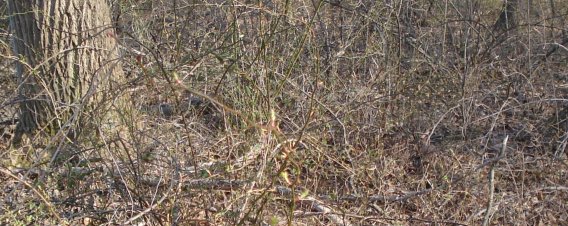Please read this linked article first. All the pictures are taken today in places where I have been running for more than ten years. I have been observing what changed and what stayed the same during that time. The picture texts could be read independent of the general text.
I was still thinking re the ivy problem and the general problem of native and invasive species. Let me stipulate that there are real problems with invasive species. In fact, I would rate it as one of the most important problems we face, bar none. The Washington Post has an article today on potential release of Asian oysters into the Chesapeake, which is one of the high risk plays that scare everyone involved. On the personal side, I spend many days fighting the Chinese paradise trees that infest parts of my forest land and they seem to be in league with another invasive – the multiflora rose – which makes approaching them painful. So I know the problem with invasive theoretical and practical.
Below is an ivy covered culvert. It has been holding the soil since before 1997, when I first saw it. The ivy slows the storm water and allows it to soak in. Ivy is low/no maintenance and nothing else would grow as well in this shady and stressful environment. This human environment will NEVER be like the natural world. The rain quickly runs off the impervious surfaces and washes away soil and most vegetation…but not ivy. It would be foolish to forgo this option.
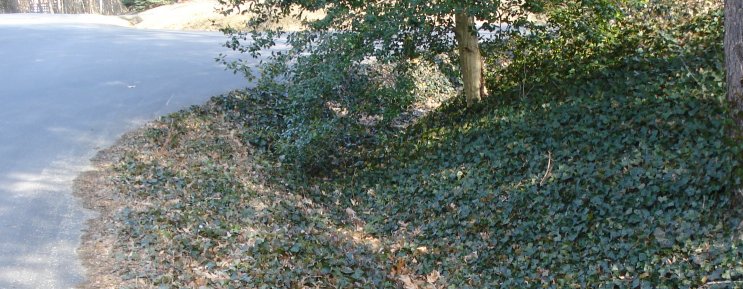
But the whole concept of invasive lies on a continuum. Horses are not native to North America, at least since their ancestors disappeared here during Pleistocene. Nature did not place the horse on our continent; the Spaniards and English did the job. Few people today consider horses an invasive species, but they are. In fact, wild horses get special legal protection. Also among the immigrants are honey bees, white clover, cows, sheep, wheat and even earthworms. It is clear that these species have altered the environment in profound ways; they made the land more productive and it would be insane to try to eradicate them. On the other hand, we have chestnut blight, snakeheads, kudzu, wild hogs, Chinese longhorn beetles, emerald ash borers … the list goes on.
Below is an alternative to ivy – concrete. Storm water rushes down and floods stream beds. This culvert, BTW, is above the ivy in the picture, so it rushes into the ivy, where it is slowed down and tamed.
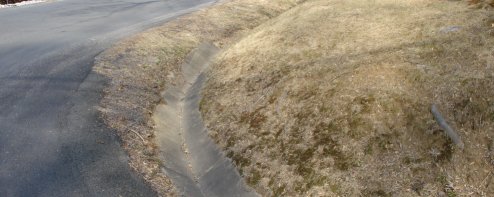
Reasonable people disagree about where to draw the line. Norway maples are the most common street trees in the upper Midwest. Are they invasive? Some people think so. They replaced the American elm, almost eradicated by the invasive Dutch elm disease. The salmon introduced into the Great Lakes are generally well received. They replaced the lake trout, wiped out by the invasive lamprey eel. We cannot dial the history back to the past, and what year would we choose anyway? Species composition is always changing.
Below – somebody dumped gravel into this low spot to slow erosion. They still mow the grass all around. Maybe ivy would be better than this alternative.
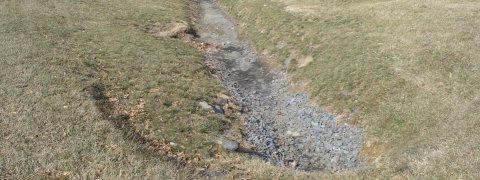
The problem of invasiveness is really a type of cost/benefit calculation. My own bias is to prefer native species – actually local species – because they have been around together a long time and have a demonstrated adaption to the nearby environment. But I do not limit my choices to only local species because I recognize that human activities have changed the environment sometimes rendering the previous adaption less adaptive. The human changed environment is the new environment. The old one is only historical.
Below – imagine the force the stormwater will achieve as it rushes down this hill in a concrete culvert with no plants to slow it down and no possibility of soaking into the ground.

This last part is important. Every species is adapted to a niche. But the niche is not the species and the species is not the occupant of the niche. A species that occupies a very narrow niche is probably on its way to extinction in our rapidly changing world. One of the definitions of an invasive species is that it can invade several niches and do it well. This is also an advantage.
Below is a local stream where most of the water running through the culverts ends up. The impervious surfaces and the fast water runoff ensures that it floods and erodes. The rip-rap holds it somewhat, but it requires consistent attention.
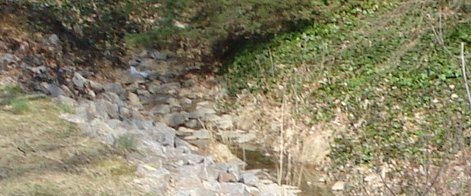
Our environmental tool kit should include a variety of solutions, native and not. While native is often the best choice, a slavish devotion to the environment we happen to have had in 1607 is senseless.
Below – the neighborhood is in many ways an oak savannah. The oaks were planted years ago when the houses were built and/or some were left from the original cover. It would be better if the lawn was replaced with some more resilient, non-mowing, vegetation.
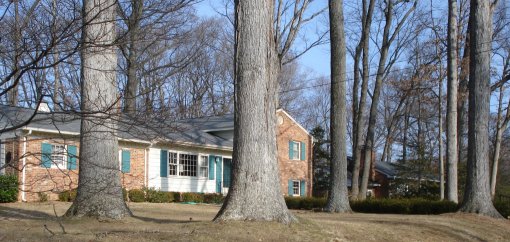
BTW – some of our native species are invasive in other places. Our native southern pines are planted all over Australia and South America, where they often grow better than they do back here at home. Some people in Scotland complain that our Sitka spruces and Douglas fir are now the main components of their forests. The world’s largest redwoods may soon be in New Zealand, where they were introduced 150 years ago. They grow even better there than they do in California. I saw some very big redwoods in Portugal and some really majestic sequoias in Geneva.
Below is a bad introduced species – bamboo. Bamboo is extremely aggressive and hard to eliminate. People plant it because it provides quick cover, but it takes over real quick.
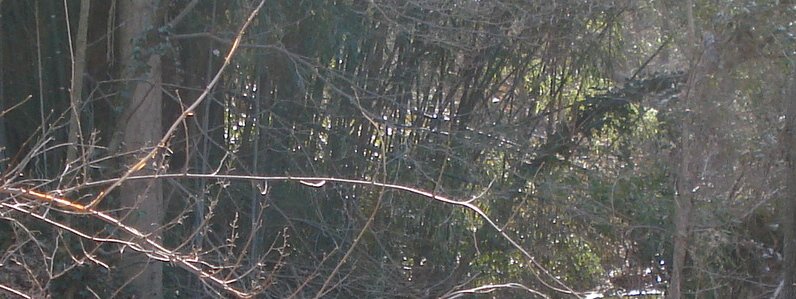
Below is a yard with a ground cover of pakisandra. I don’t know if they are native, but they are not as hardy as ivy and they can be killed by too much foot traffic or even weed wacking. The advantage is low maintenance and no mowing. BTW – most lawnmowers make more pollution than a full sized car.
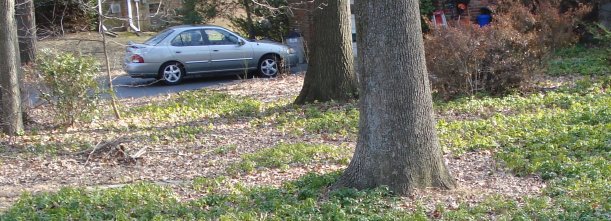
Below is a “good” non-native, a Lebanon cedar. They get big and live a long time. I really cannot reliably tell cedars apart unless they have some special color, like some sorts of Atlas cedars. I planted a deodar cedar near gallows. The only way I could identify it was from the tag at Home Depot.
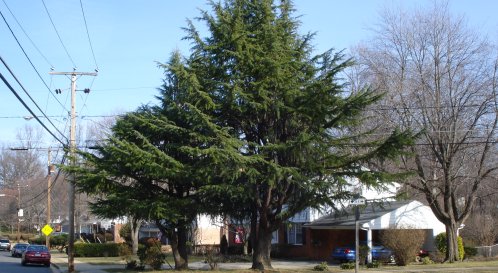
Below is a bad non-native, multiflora rose. You cannot see them very well in the picture, but they cover the forest floor. They have pretty flowers, but I hate them for their thorns; those thorns, however, are why they are so common. The government recommended them as erosion control and as a “living fence.” I can attest to their value as fence barriers.
